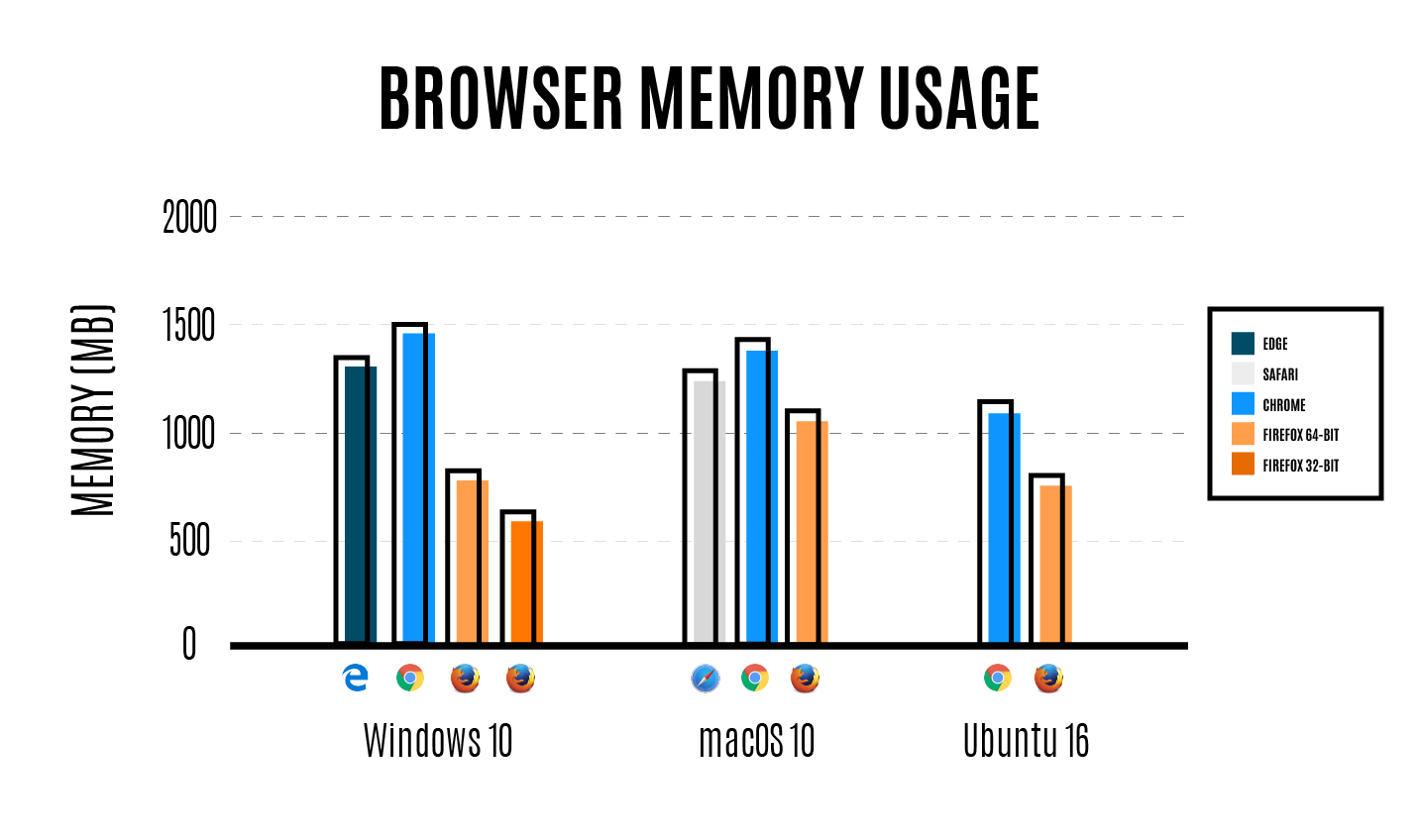Firefox 54 is released, which finally got support for multiprocess mode
The Firefox development team has released a new version of the browser with number 54. The main feature of the updated Firefox is the support for multi-process web page processing, which has been under development for eight years under the code name Electrolysis (E10S). Mozilla representatives call the new version of the browser “the best Firefox”.
 / photo by Dees Chinniah CC
/ photo by Dees Chinniah CC
The first version of multiprocess Firefox was introduced last August (version 48). In it, working with the UI was moved to a separate process, which made the interface responsive even with high system loads. In the version of Firefox 54, developers have gone even further by organizing work in several parallel processes: each with its own RAM and CPU resources controlled by the operating system.
')
The disadvantage with this approach is usually high memory consumption. For example, Google Chrome by default creates a new process for each tab and consumes a lot of resources. However, according to Firefox marketing director Ryan Pollock (Ryan Pollock), unlike Chrome, Firefox will not take away all the RAM and slow down the user's computer.
In Mozilla, to avoid unnecessary memory consumption, by default, only four content processes are started. Probably the number four is the golden mean between memory consumption and the advantages of multiprocessor systems. However, the number of processes can be configured by going to the about: config tab and changing the value of dom.ipc.processCount.
 Browser memory consumption comparison ( Source )
Browser memory consumption comparison ( Source )
Users note that Firefox 54 is actually faster compared to previous versions, and consumes less resources than Chrome. However, if you have installed add-ons that do not support multi-threaded work, you will not be able to take advantage of new browser features. Detailed information about Firefox's multi-threaded work can be found in the post by Ryan Pollock here .
In addition to multiprocessing, Firefox 54 also received several new WebExtension API, for developing add-ons compatible with other browsers. The release includes an API for creating sidebars, allowing you to place local HTML files inside the panel. It also added the ability to connect its own protocol handler and the ability to configure about: newtab. In addition, the Privacy API has been implemented for managing security and privacy settings (networkPredictionEnabled, webRTCIPHandlingPolicy, and hyperlinkAuditingEnabled).
The new browser has been activated sandbox-isolation , which limits the access of Firefox subprocesses to the file system and other processes. In Linux, system call isolation is implemented using Seccomp-bpf, as well as User namespace and chroot. Windows also uses the sandboxbroker and sandboxtarget libraries, developed and used by Google. Another of the changes implemented in Firefox 54 is the ability to create and save your own devices in Responsive Design Mode for testing sites (you can set the screen resolution, network bandwidth, etc.).
Also, besides innovations and bug fixes, Firefox 54 eliminated a series of vulnerabilities , some of which were marked as critical - they could lead to the execution of an attacker's code when opening phishing pages.
Finally, with the release of Firefox 54, Mozilla completes the process of closing a channel with Aurora browser versions. Now the organization intends to use the principle of phased delivery of updates for the Release-channel, where new features, such as Electrolysis, are gradually added to the browsers of a small number of users. If the innovation triggers bursts of failures, or the telemetry data indicates difficulties, Mozilla halts the update scan and modifies the solution.
Thus, the process of product delivery will consist of three stages: Nightly, Beta, Stable. Refusing to channel Aurora, the developers hope to speed up the process of release of stable versions of the browser for several months.
A complete list of changes to the new release can be found on the developers website at the link .
PS What else do we write in our blog:
 / photo by Dees Chinniah CC
/ photo by Dees Chinniah CCThe first version of multiprocess Firefox was introduced last August (version 48). In it, working with the UI was moved to a separate process, which made the interface responsive even with high system loads. In the version of Firefox 54, developers have gone even further by organizing work in several parallel processes: each with its own RAM and CPU resources controlled by the operating system.
')
The disadvantage with this approach is usually high memory consumption. For example, Google Chrome by default creates a new process for each tab and consumes a lot of resources. However, according to Firefox marketing director Ryan Pollock (Ryan Pollock), unlike Chrome, Firefox will not take away all the RAM and slow down the user's computer.
In Mozilla, to avoid unnecessary memory consumption, by default, only four content processes are started. Probably the number four is the golden mean between memory consumption and the advantages of multiprocessor systems. However, the number of processes can be configured by going to the about: config tab and changing the value of dom.ipc.processCount.

Users note that Firefox 54 is actually faster compared to previous versions, and consumes less resources than Chrome. However, if you have installed add-ons that do not support multi-threaded work, you will not be able to take advantage of new browser features. Detailed information about Firefox's multi-threaded work can be found in the post by Ryan Pollock here .
In addition to multiprocessing, Firefox 54 also received several new WebExtension API, for developing add-ons compatible with other browsers. The release includes an API for creating sidebars, allowing you to place local HTML files inside the panel. It also added the ability to connect its own protocol handler and the ability to configure about: newtab. In addition, the Privacy API has been implemented for managing security and privacy settings (networkPredictionEnabled, webRTCIPHandlingPolicy, and hyperlinkAuditingEnabled).
The new browser has been activated sandbox-isolation , which limits the access of Firefox subprocesses to the file system and other processes. In Linux, system call isolation is implemented using Seccomp-bpf, as well as User namespace and chroot. Windows also uses the sandboxbroker and sandboxtarget libraries, developed and used by Google. Another of the changes implemented in Firefox 54 is the ability to create and save your own devices in Responsive Design Mode for testing sites (you can set the screen resolution, network bandwidth, etc.).
Also, besides innovations and bug fixes, Firefox 54 eliminated a series of vulnerabilities , some of which were marked as critical - they could lead to the execution of an attacker's code when opening phishing pages.
Finally, with the release of Firefox 54, Mozilla completes the process of closing a channel with Aurora browser versions. Now the organization intends to use the principle of phased delivery of updates for the Release-channel, where new features, such as Electrolysis, are gradually added to the browsers of a small number of users. If the innovation triggers bursts of failures, or the telemetry data indicates difficulties, Mozilla halts the update scan and modifies the solution.
Thus, the process of product delivery will consist of three stages: Nightly, Beta, Stable. Refusing to channel Aurora, the developers hope to speed up the process of release of stable versions of the browser for several months.
A complete list of changes to the new release can be found on the developers website at the link .
PS What else do we write in our blog:
- IaaS in the world of music: how the cloud becomes the standard for placing audio content
- Why the result of testing the speed of a disk in a laptop can be better than an industrial server in the cloud?
- How to handle peak loads with IaaS
- Performance Optimization in vSphere: Solving Major CPU Problems
- Performance Optimization in vSphere: Solving Major CPU Problems (Part 2)
Source: https://habr.com/ru/post/330576/
All Articles